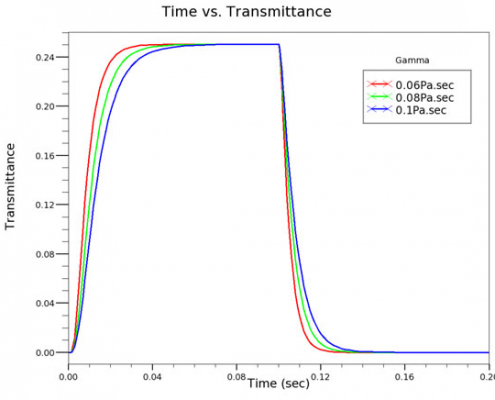
Dynamic Analysis of Liquid Crystal Pixels
We have demonstrated in previous articles the static electrical and optical simulation of LC cells [1][2]. The last piece of the function for a comprehensive analysis of an LC pixel is the capability of performing transient simulation. In this article, we will show the dynamic calculation of the LC director and the combination of electrical and optical simulation.
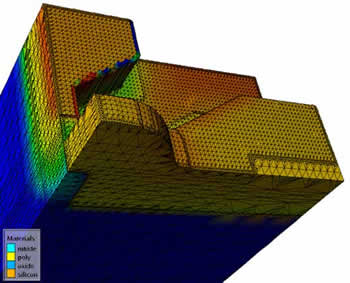
Hints, Tips and Solutions – Adding An Impurity to a Diffusion Model and Enable Diffusion of a New Impurity in a Specific Material
OBJECTIVEAdd an impurity (H) to a material (silicon) for a diffusion model (Fermi).
The description below refers to Victory Process version 7.27.X.
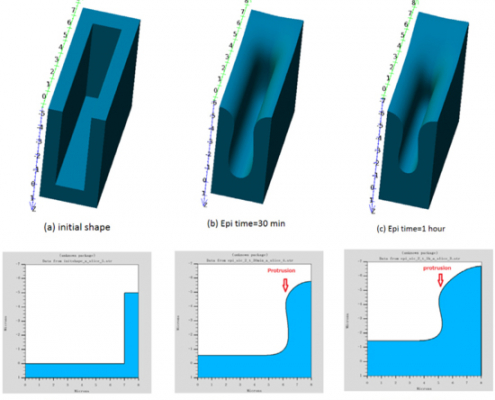
3D Topography Simulation of SiC Epitaxial Growth Modeled by Diffusive Flux and Gibbs-Thomson Effect
One of wide bandgap semiconductors, SiC has been widely applied to the power devices, and then, the super-junction MOS transistor of SiC is being investigated to obtain higher performance for Ron and BV [1]. The super-junction structure is fabricated by trench filling with the epitaxial growth [2, 3].
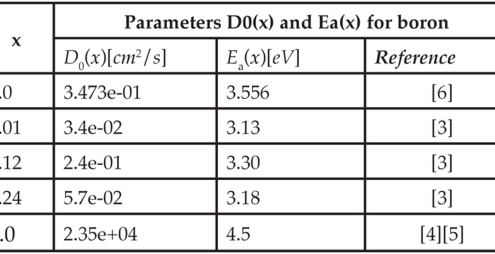
An Empirical Composition Dependent Model of Dopant Diffusion Coefficients in Si, Si1-x Gex and Ge Material Systems
Previously published fast empirical models for diffusion coefficients in silicon-germanium (Si1-x Gex) [1][2] were not applicable to high germanium content x≥0.5 and hence did not properly extend towards germanium. For some dopants, diffusion coefficients become very small and hence this model cannot be applied to devices containing silicon-germanium with high germanium content or devices containing silicon, silicon-germanium and germanium
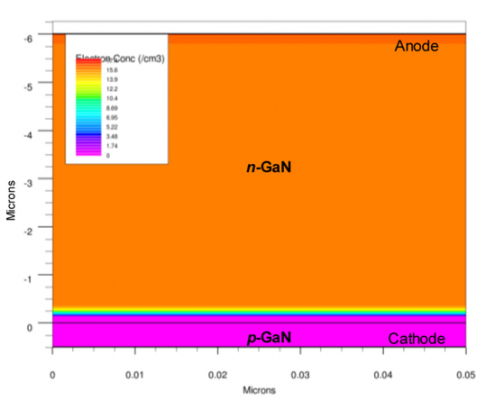
TCAD Simulation of Leakage Through Threading Dislocations in GaN-based pn-diodes
Gallium nitride (GaN)-based devices for power electronics show superior performance in comparison to silicon carbide and silicon-based devices [1]–[3]. The development of vertical devices, like pn-diodes and power HEMTs results in higher power density and voltage handling. One of the key parameters of this technology is the dislocation density. This is lower in free-standing GaN-on-GaN epitaxy than in heteroepitaxial GaN growth on different substrates like SiC or Si, but still has a density of 104-106 cm-2 [4]. The diode reverse leakage seems to be related to the dislocation density, and it can be modelled with a Poole-Frenkel or a hopping conduction mechanism [5]. The Poole-Frenkel model is already implemented in the trap-assisted tunnelling model in Silvaco Atlas [6]. For the leakage in threading dislocations a variable-range hopping (VRH) model has been implemented in the simulator, based on Ref. [7].

Hints, Tips and Solutions – DeckBuild Remote VM Setup
This document describes how to setup a virtual environment suitable for the deckbuild remote mode.
The host system to consider shall be Windows (7 or 10). The goal is to use the windows version of the TCAD GUI tools TonyPlot and DeckBuild and to run any simulation (Victory, Athena, Clever) on a Linux Virtual Machine (VM).
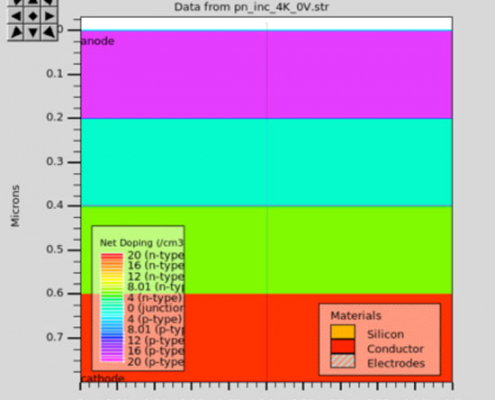
TCAD Simulation of Si and GaAs p-n Junction Devices at Cryogenic Temperatures, Down to 2 K
Cryogenic electronics plays a fundamental role in several applications, such as spacecraft, high-energy physics experiments, metrology, superconductive astronomical detectors and, with the increased interest in quantum computing, the manipulation of quantum bits (qubits) [1]. Outstanding characteristics have been reported for advanced CMOS technologies operating at cryogenic temperature in terms of on-state current, leakage current, subthreshold swing, and transconductance [2]. This represents an excellent opportunity to use such advanced technologies to design and implement a quantum computing control system (including multiplexers, LNAs, and RF oscillators) and introduce it inside the refrigerator together with the qubits [3]. Another recently growing field of application is the cryogenic silicon photonics [4].
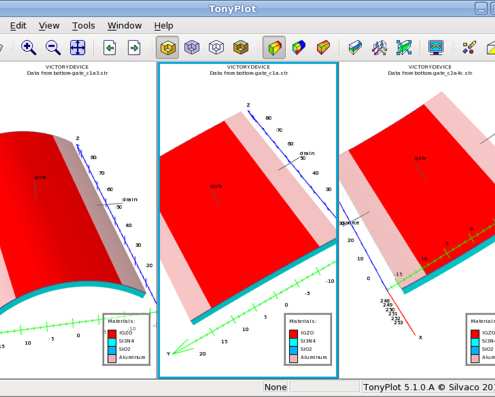
Bi-axial Deformation with Victory Mesh for Flexible Electronic Applications
For high performance large area flexible electronics, amorphous metal oxide semiconductor based thin film transistors offer many advantages. These include high mobility, steep sub-threshold and ultralow leakage current, with low cost and large area manufacturability.
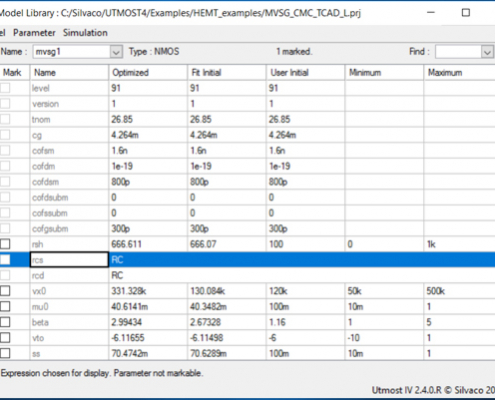
TCAD-based GaN HEMT Scalable Modeling Flow Using the MVSG Compact Model
Gallium Nitride High Electron Mobility (GaN HEMT) device technology has gained a lot of traction during the last years. These devices have significant advantages compared to Silicon in user applications such as high frequency/high power amplifiers, radar systems, power conversion and applications where stability over a wide range of temperatures is required, such as automotive-related.
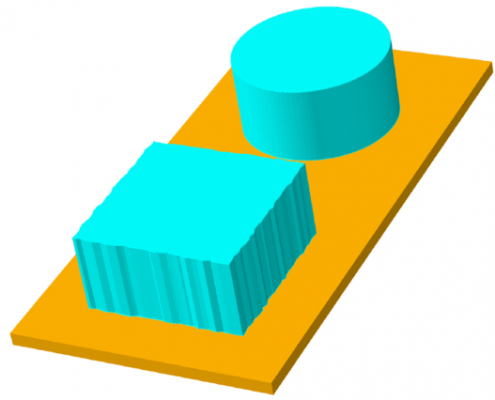
Hints, Tips and Solutions – Adding Random Noise to Mask Layout
Geometrical module of Victory Process allows the fast and accurate transfer of mask patterns to the structure. However, sometimes it is necessary to emulate the imperfections of physical processes while retaining the speed and accuracy of the geometrical approximation. For example, you may want to test the tolerance of the final device to random fluctuations in structure’s geometry.
